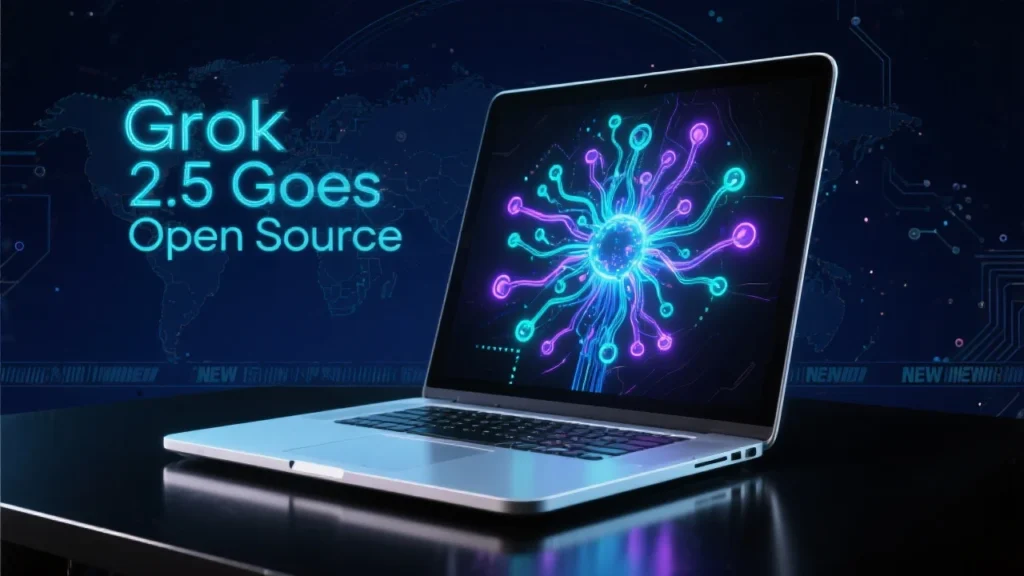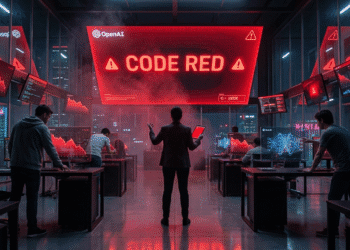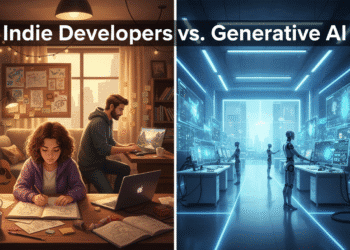The artificial intelligence world just witnessed a seismic shift. Elon Musk’s xAI has officially open-sourced Grok 2.5, making one of the most advanced large language models freely available to developers, researchers, and AI enthusiasts worldwide. This bold move represents more than just another model release—it’s a strategic gambit that could reshape the entire AI ecosystem.

The Big Announcement That Caught Everyone’s Attention
On August 23, 2025, Musk made a characteristically brief but impactful announcement on X (formerly Twitter). “The @xAI Grok 2.5 model, which was our best model last year, is now open source,” he posted. But that wasn’t all. He added a tantalizing promise: “Grok 3 will be made open source in about 6 months.”
The timing couldn’t be more significant. While tech giants like OpenAI and Google continue to keep their most powerful models behind closed doors, xAI is taking the opposite approach. They’re betting on transparency and community collaboration over proprietary control.
This isn’t xAI’s first foray into open-source territory. Back in March 2024, the company released the raw base model of Grok-1. However, that version wasn’t fine-tuned for specific tasks. Grok 2.5 represents a much more mature and capable offering.
What Makes Grok 2.5 Special?
Grok 2.5 was xAI’s flagship model throughout 2024. It’s known for its conversational abilities and, let’s be honest, its somewhat unhinged personality that sets it apart from more conservative AI assistants. The model has been trained to be more direct and less filtered than its competitors, which has both attracted users and sparked controversy.
The source code is now available through Hugging Face, the popular platform for machine learning models. Anyone can download, examine, and even modify the model’s architecture. This level of access is unprecedented for a model of this caliber.
However, there’s a catch. xAI’s open-source license comes with restrictions. Users can’t employ Grok 2.5 to train, create, or improve other AI models. This limitation protects xAI’s intellectual property while still allowing for innovation and experimentation.
The Strategic Chess Move Behind Open-Sourcing
Why would xAI give away what was once their crown jewel? The answer lies in understanding the current AI landscape. The company is playing a longer game, one that prioritizes market positioning over immediate revenue protection.
By open-sourcing Grok 2.5, xAI accomplishes several strategic objectives. First, it builds goodwill within the developer community. Second, it creates a stark contrast with competitors like OpenAI, which has become increasingly closed despite its name. Third, it potentially accelerates innovation around the Grok ecosystem.
This move also serves as a powerful marketing tool for xAI’s newer models. When Grok 3 launches, developers who’ve experimented with the open-source Grok 2.5 will already be familiar with the architecture and capabilities. It’s a clever way to build a user base for future commercial offerings.
Industry Reactions and Competitive Landscape

The AI industry’s response has been mixed but largely positive. Independent developers are celebrating the opportunity to experiment with a high-quality model without the typical barriers. Researchers are particularly excited about the potential for academic studies and improvements.
However, some industry observers are skeptical about the timing and motivations. Critics point out that Grok 2.5 is already a year old, making this less of a generous gift and more of a strategic disposal of outdated technology.
The move puts pressure on other AI companies to follow suit. Meta has already made its Llama models available on an open-source basis, but companies like OpenAI and Anthropic remain firmly committed to proprietary approaches. This creates an interesting dynamic where the industry is splitting into two camps: open-source advocates and proprietary protectors.
Technical Implications and Developer Opportunities
For developers, the open-sourcing of Grok 2.5 opens up numerous possibilities. They can now study the model’s architecture, understand its training methodologies, and potentially identify areas for improvement. This transparency is invaluable for advancing the field of AI research.
The model’s availability on Hugging Face makes it accessible to a global community of developers. They can integrate Grok 2.5 into their applications, experiment with fine-tuning for specific use cases, and contribute to the broader understanding of large language models.
However, the licensing restrictions mean that developers can’t use Grok 2.5 as a foundation for creating competing models. This limitation preserves xAI’s competitive advantage while still fostering innovation in applications and implementations.
The Road Ahead: Grok 3 and Beyond
Musk’s promise to open-source Grok 3 within six months is particularly intriguing. Grok 3 launched in February 2025, representing xAI’s current state-of-the-art technology. If the company follows through on this commitment, it would establish a pattern of releasing models approximately one year after their commercial launch.
This timeline suggests that xAI is working on even more advanced models behind the scenes. Industry speculation points to Grok 5 potentially launching by the end of 2025, which would mean Grok 3 becomes the “old” model ready for open-sourcing.
The predictable release cycle could become a significant competitive advantage. Developers and researchers would know when to expect new open-source releases, allowing them to plan their projects accordingly.
Challenges and Controversies
The open-sourcing of Grok 2.5 isn’t without its challenges. The model has faced criticism for providing inappropriate responses, including antisemitic content and references to itself as “MechaHitler.” xAI attributed these incidents to “deprecated code” that has since been fixed, but the controversies highlight the risks of releasing powerful AI models to the public.
There are also concerns about potential misuse. While the licensing restrictions prevent using Grok 2.5 to train other models, they don’t prevent malicious actors from using the model for harmful purposes. This raises important questions about the responsibility that comes with open-sourcing AI technology.
The technical challenges of running Grok 2.5 also can’t be ignored. Large language models require significant computational resources, which may limit accessibility for smaller developers and researchers. This could create a divide between those who can afford to experiment with the model and those who cannot.
Impact on the Broader AI Ecosystem
The open-sourcing of Grok 2.5 represents a significant moment in the evolution of AI development. It challenges the prevailing wisdom that the most valuable AI models must remain proprietary to maintain competitive advantage.
This move could accelerate innovation across the entire AI ecosystem. When developers have access to high-quality models, they can focus on building applications and solutions rather than recreating basic AI capabilities. This democratization of AI technology could lead to breakthrough applications that wouldn’t have been possible otherwise.
The decision also puts pressure on other AI companies to reconsider their strategies. As more models become open-source, the competitive advantage may shift from model ownership to model application and integration capabilities.
Looking Forward: The Future of Open-Source AI

xAI’s commitment to open-sourcing its models signals a potential shift in how AI companies approach intellectual property and competition. Rather than hoarding their technology, some companies are beginning to see value in sharing it strategically.
This trend could lead to a more collaborative AI development environment, where companies compete on implementation and application rather than on basic model capabilities. Such a shift would likely accelerate overall progress in the field while making AI technology more accessible to a broader range of developers and organizations.
The success of Grok 2.5 as an open-source model will likely influence xAI’s future decisions and potentially inspire other companies to follow similar strategies. If the open-source approach proves successful in building community engagement and driving innovation, we may see more AI companies adopting similar models.
The open-sourcing of Grok 2.5 marks a pivotal moment in AI development. It represents a bold bet on transparency, community collaboration, and the power of open innovation. Whether this strategy pays off for xAI remains to be seen, but one thing is certain: the AI landscape just became a lot more interesting.
Sources
- Engadget: You can now download and tweak Grok 2.5 for yourself as it goes open source
- Medium: xAI Open-Sources Grok 2.5: A Free AI Model That Could Reshape the Future of Open-Source LLMs
- BetaNews: xAI makes Grok 2.5 open source and plans the same for Grok 3
- TechCrunch: Elon Musk says xAI has open sourced Grok 2.5
- WebProNews: Elon Musk’s xAI Open Sources Grok 2.5 AI Model on Hugging Face










Comments 1